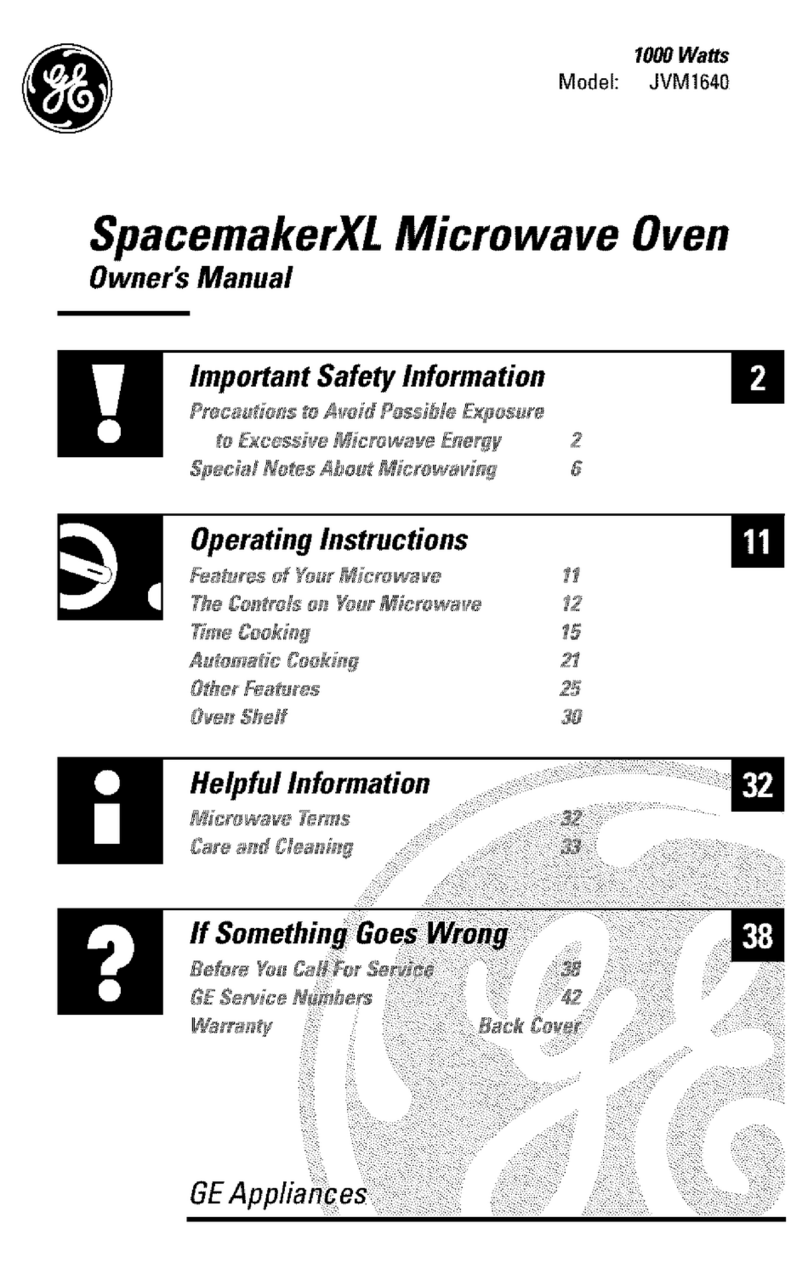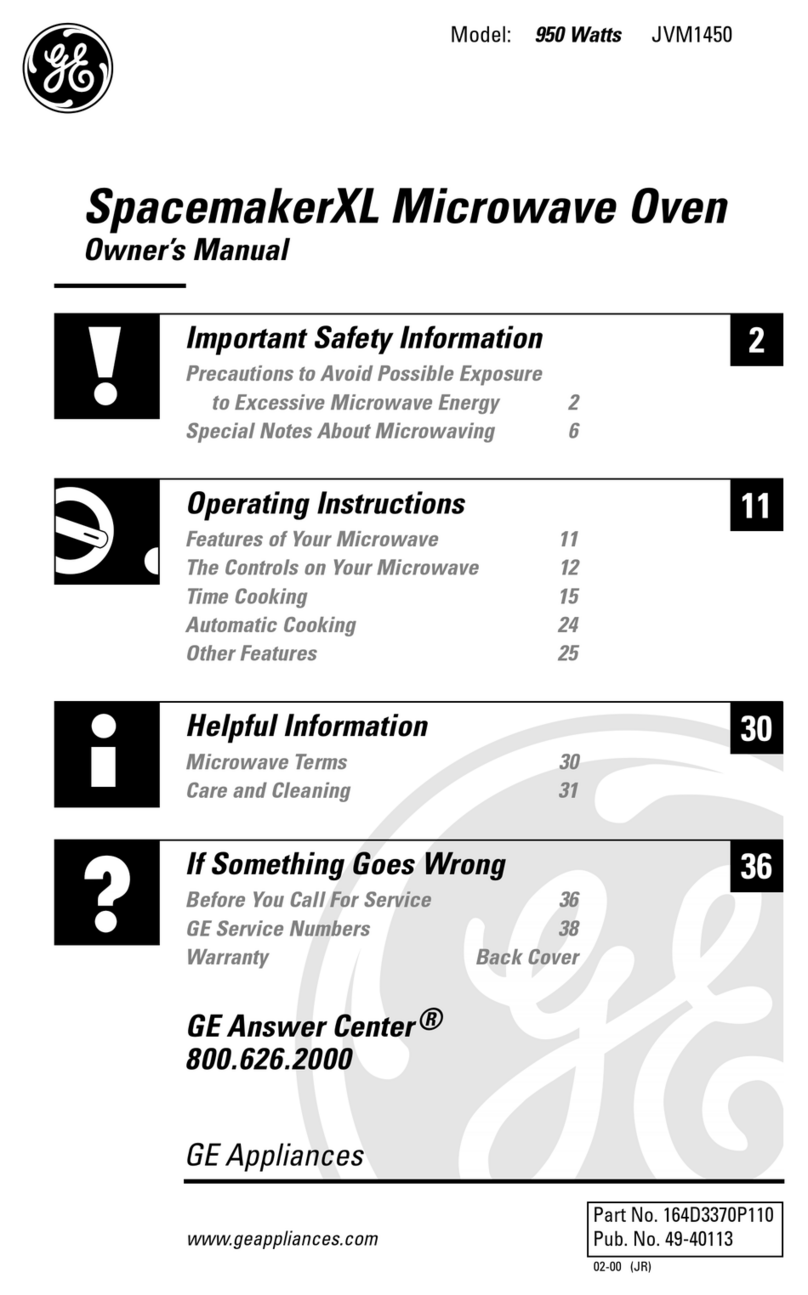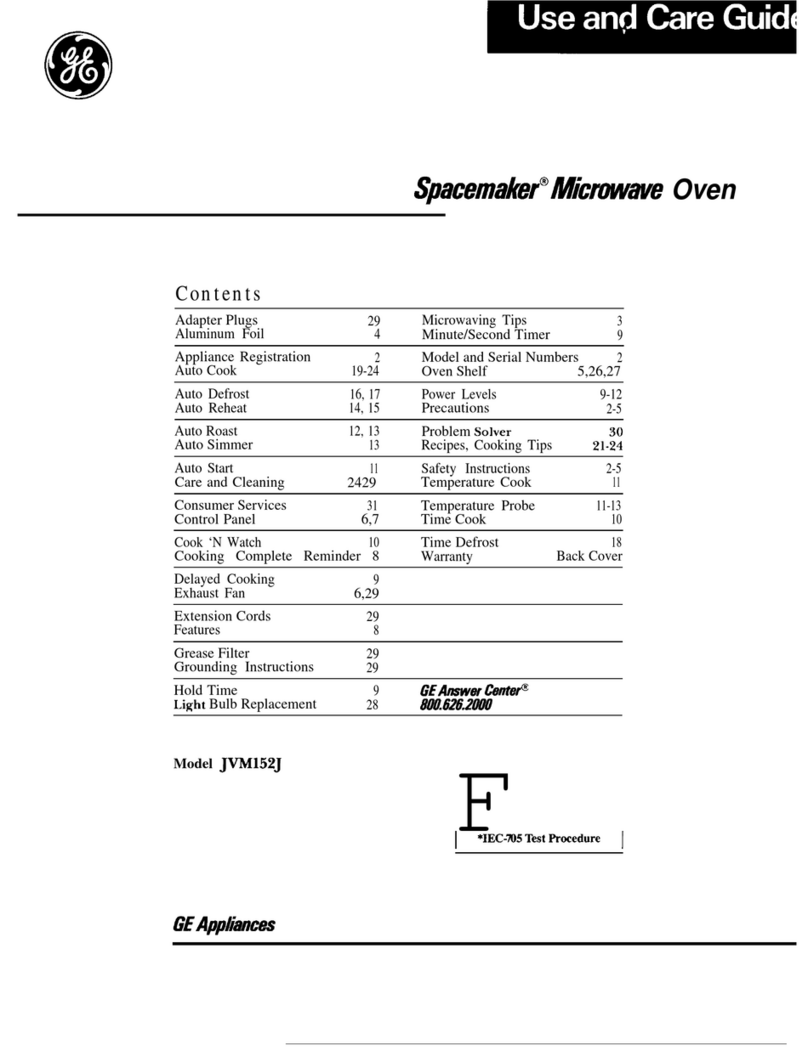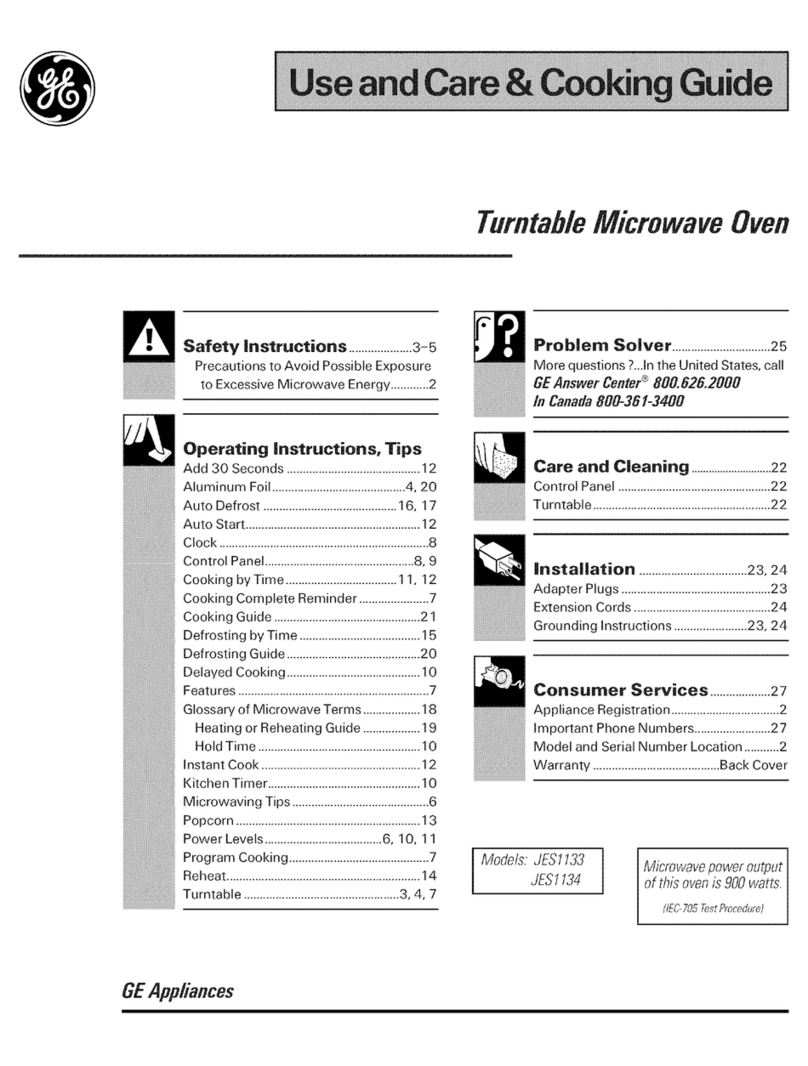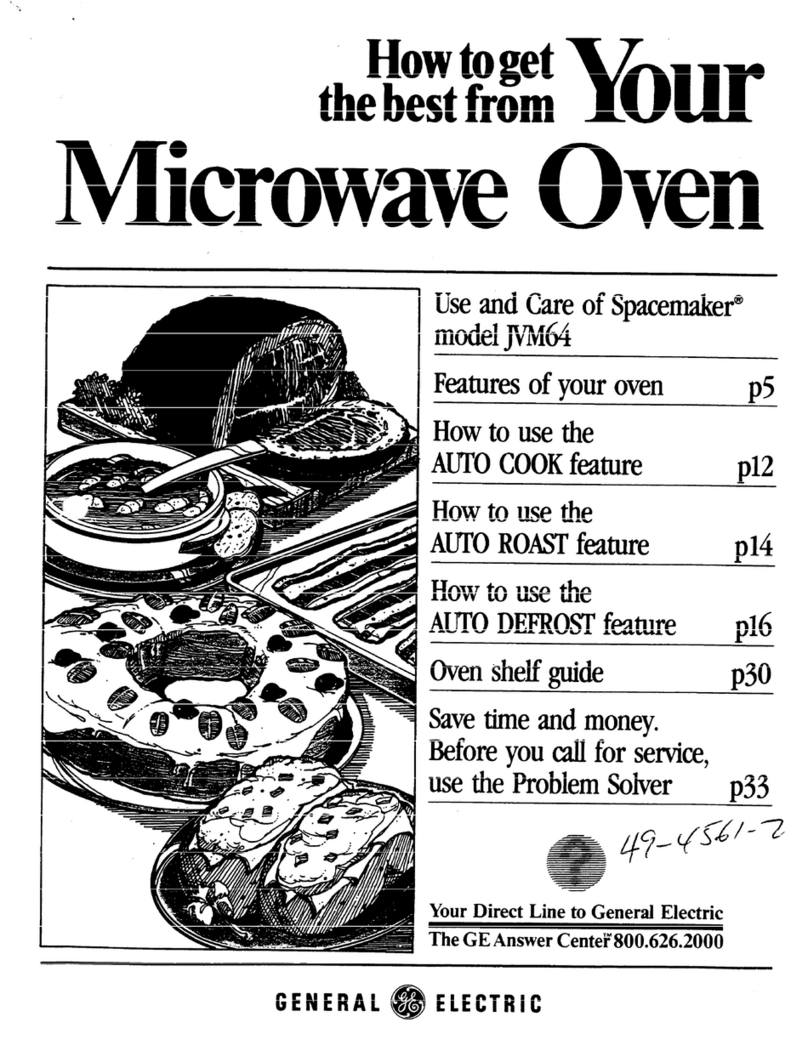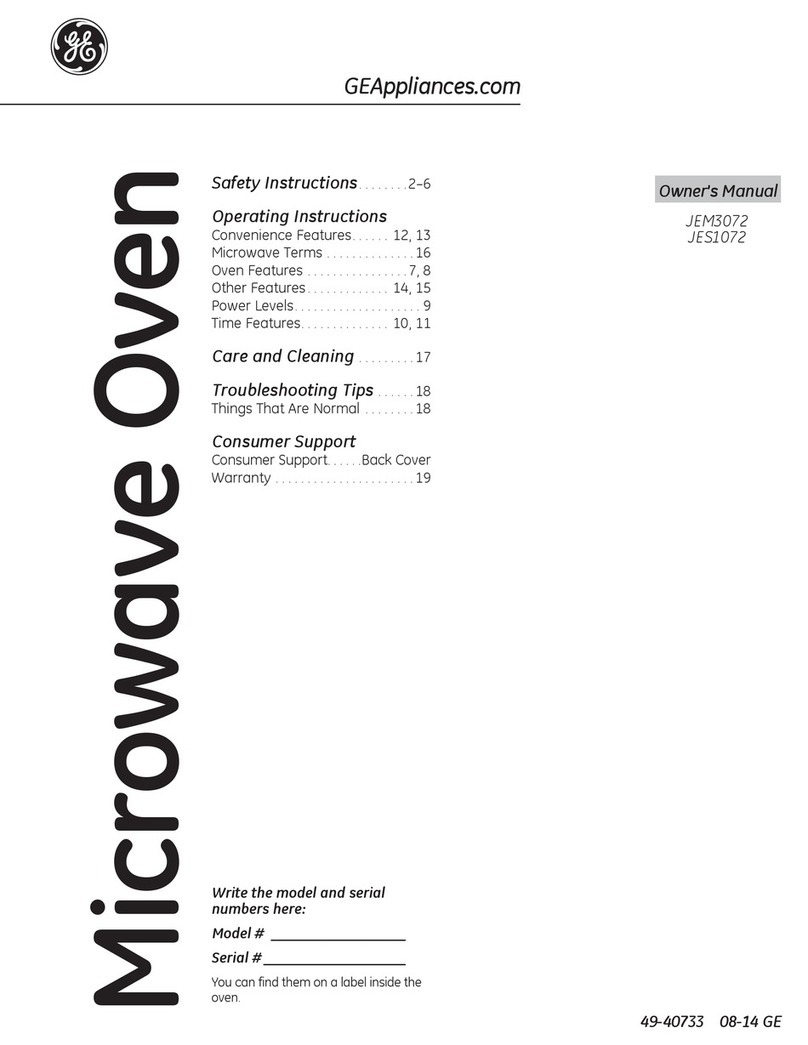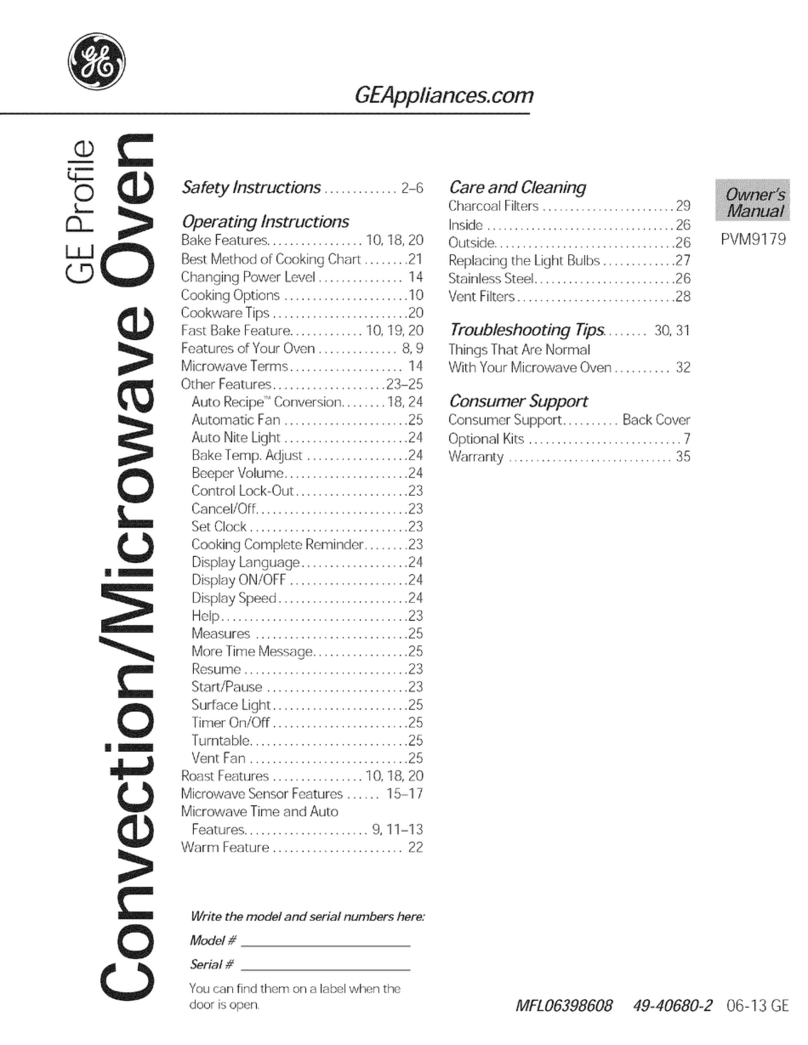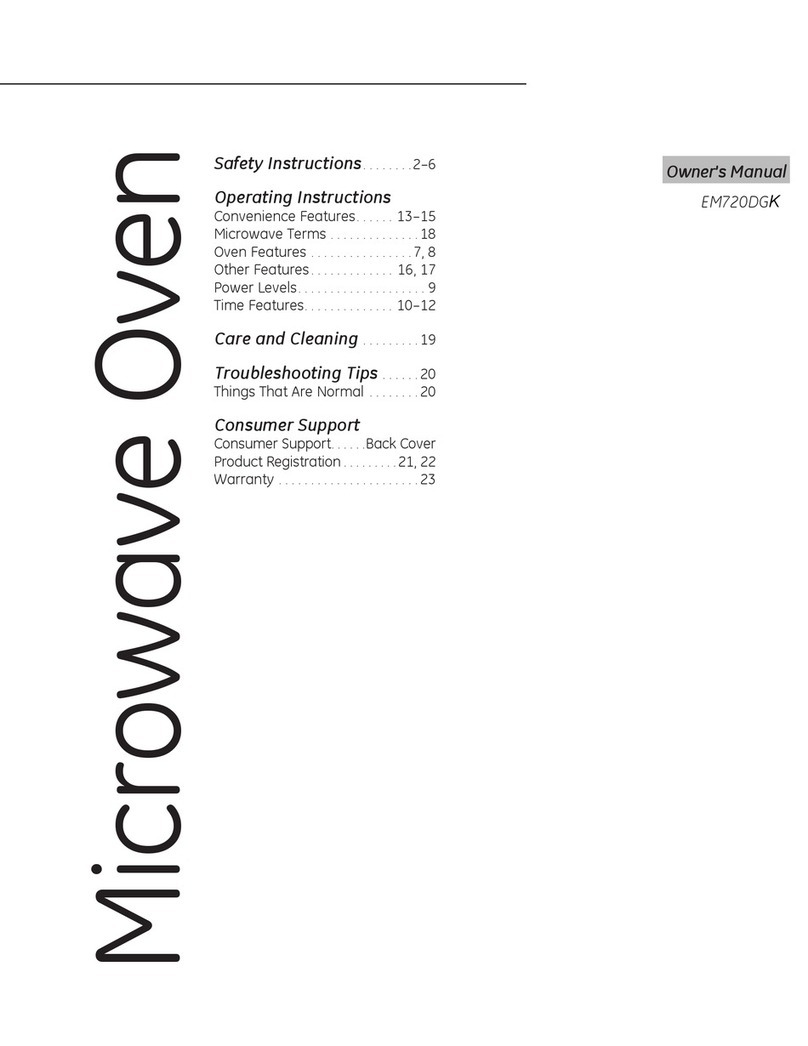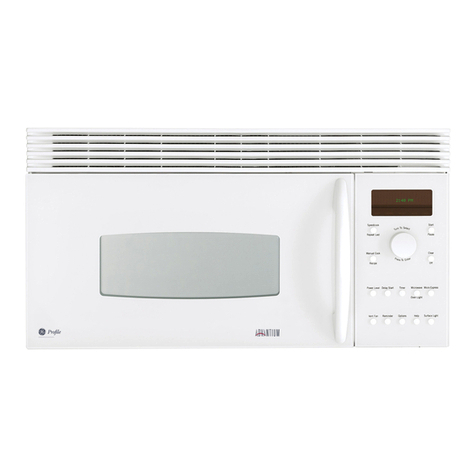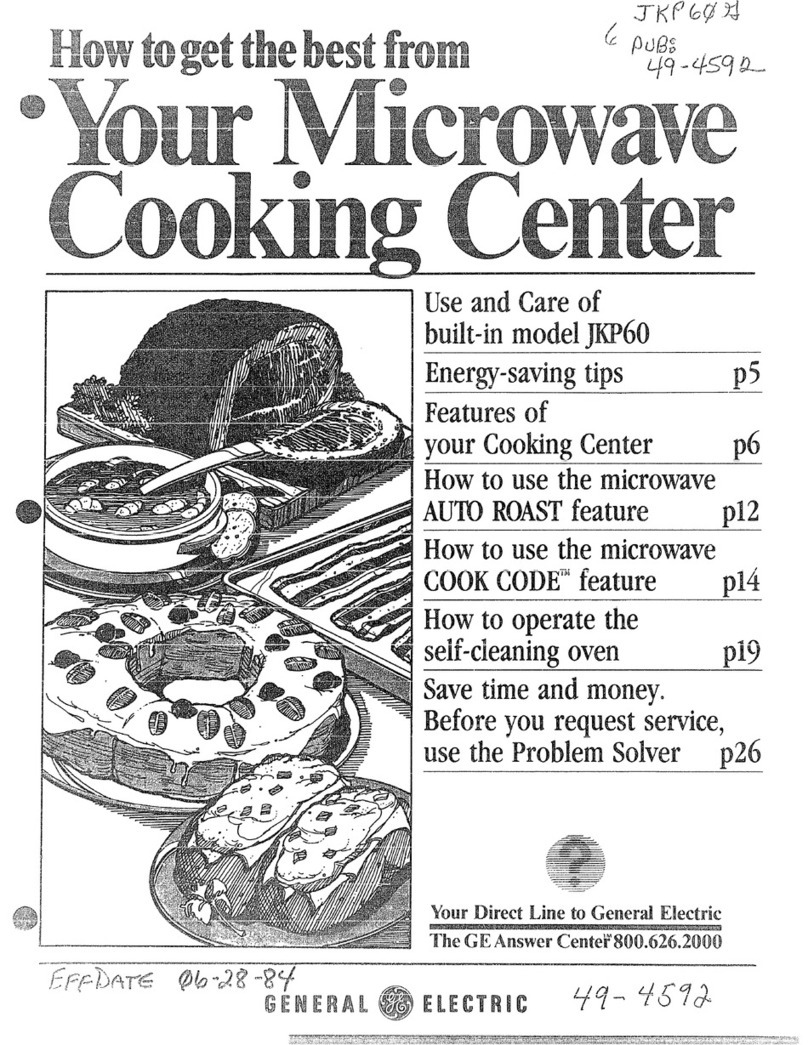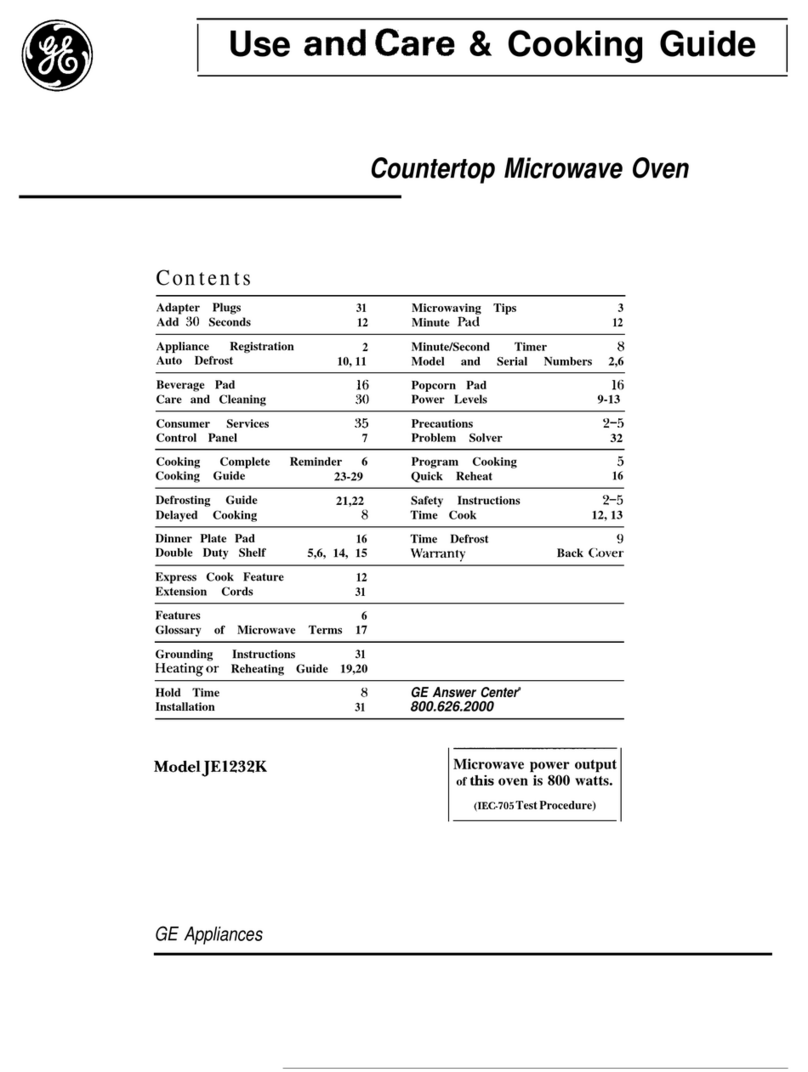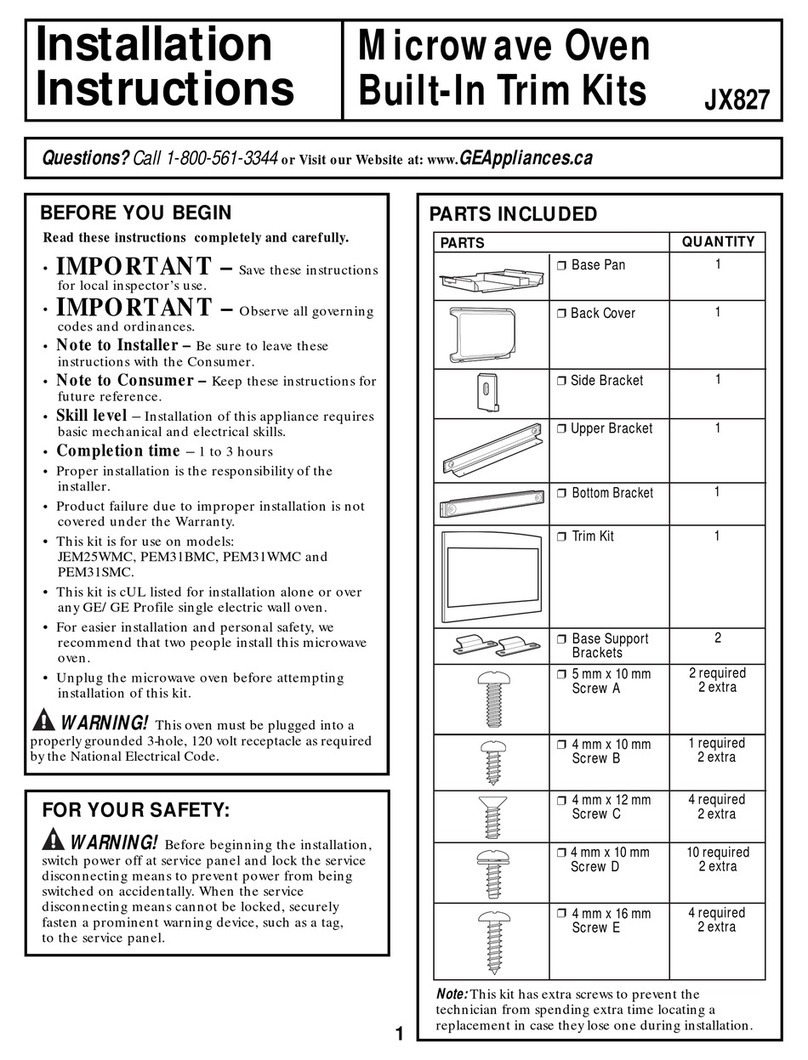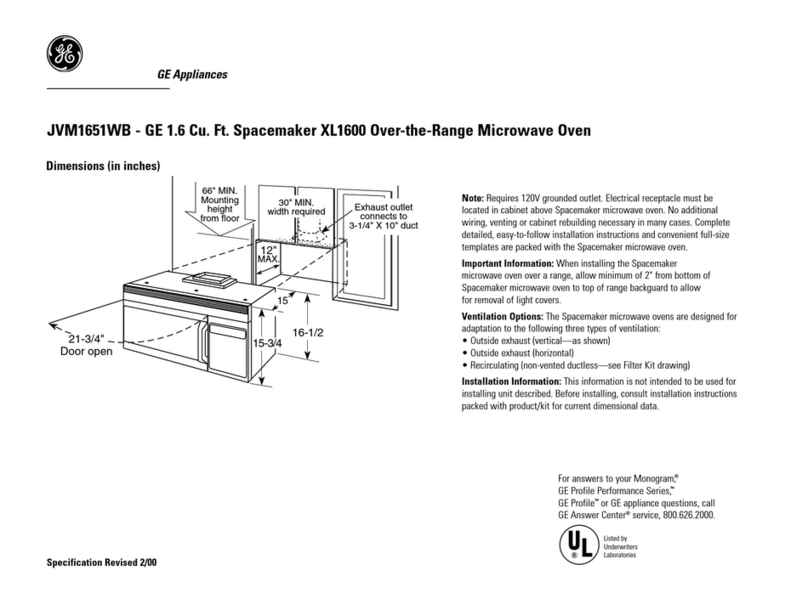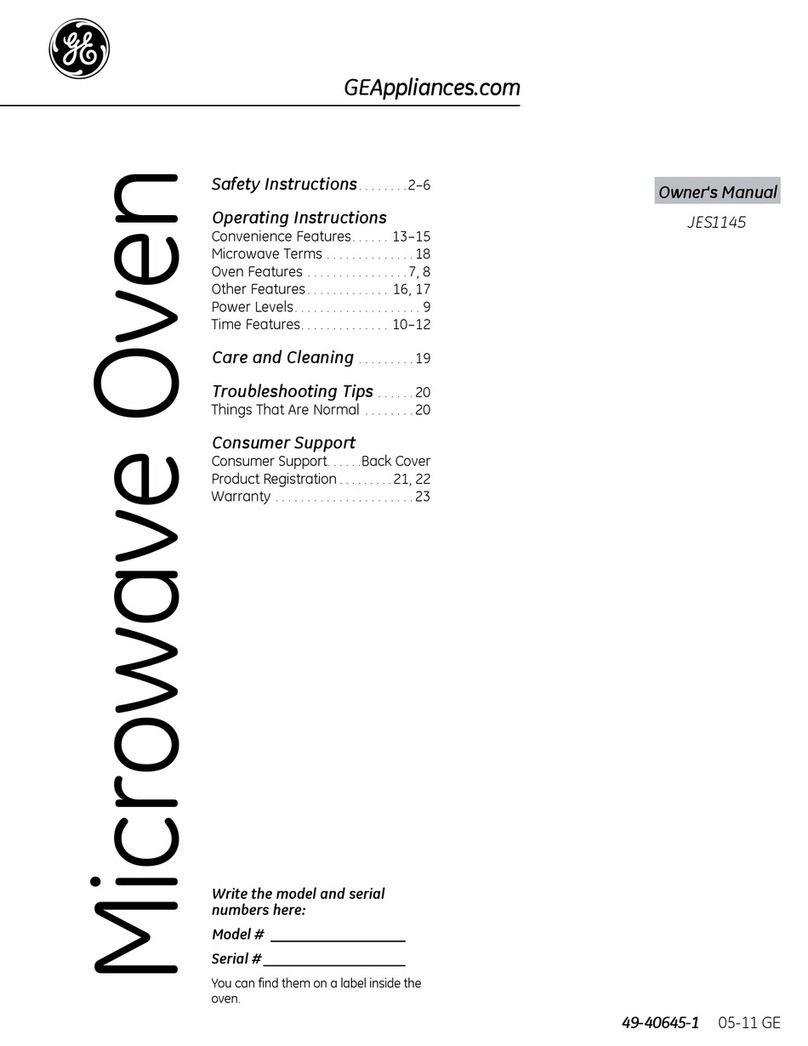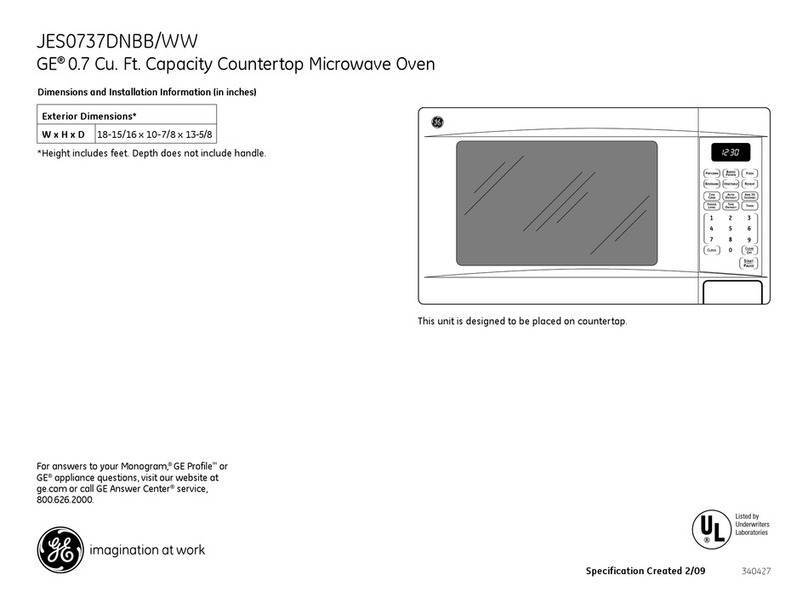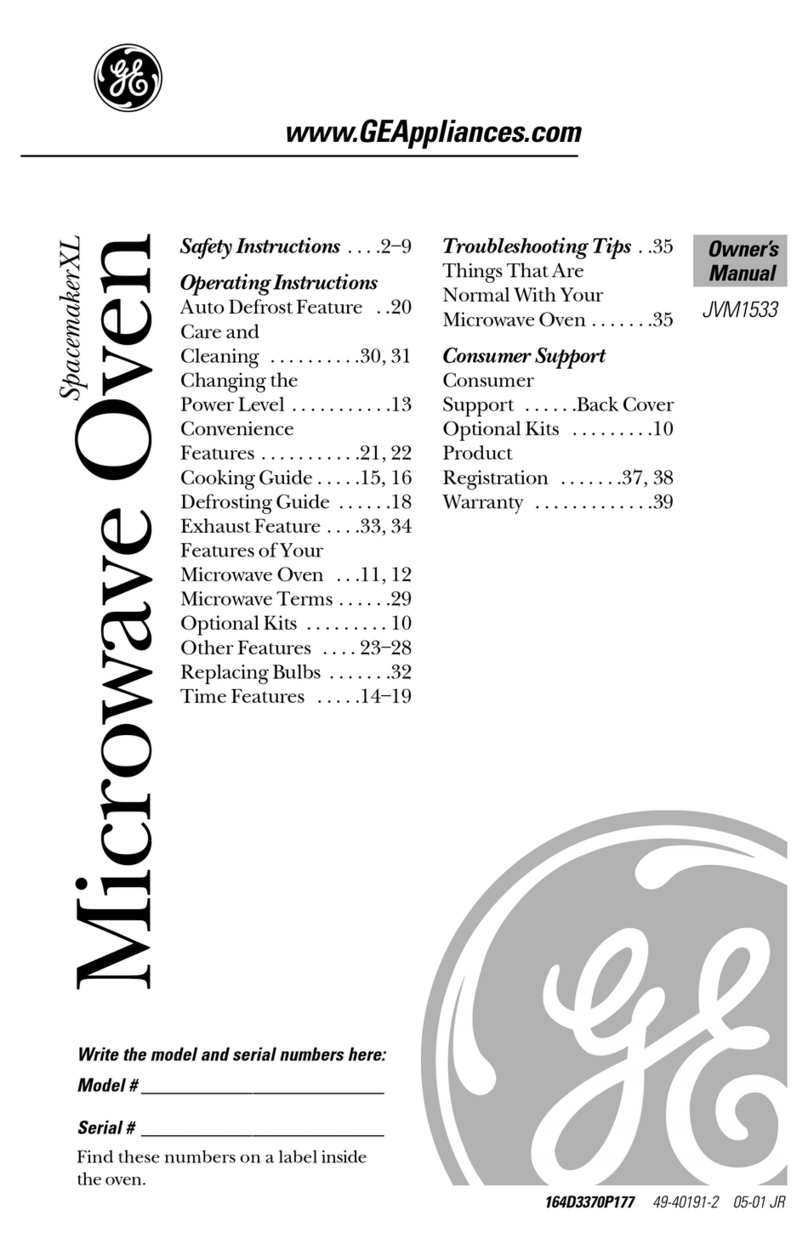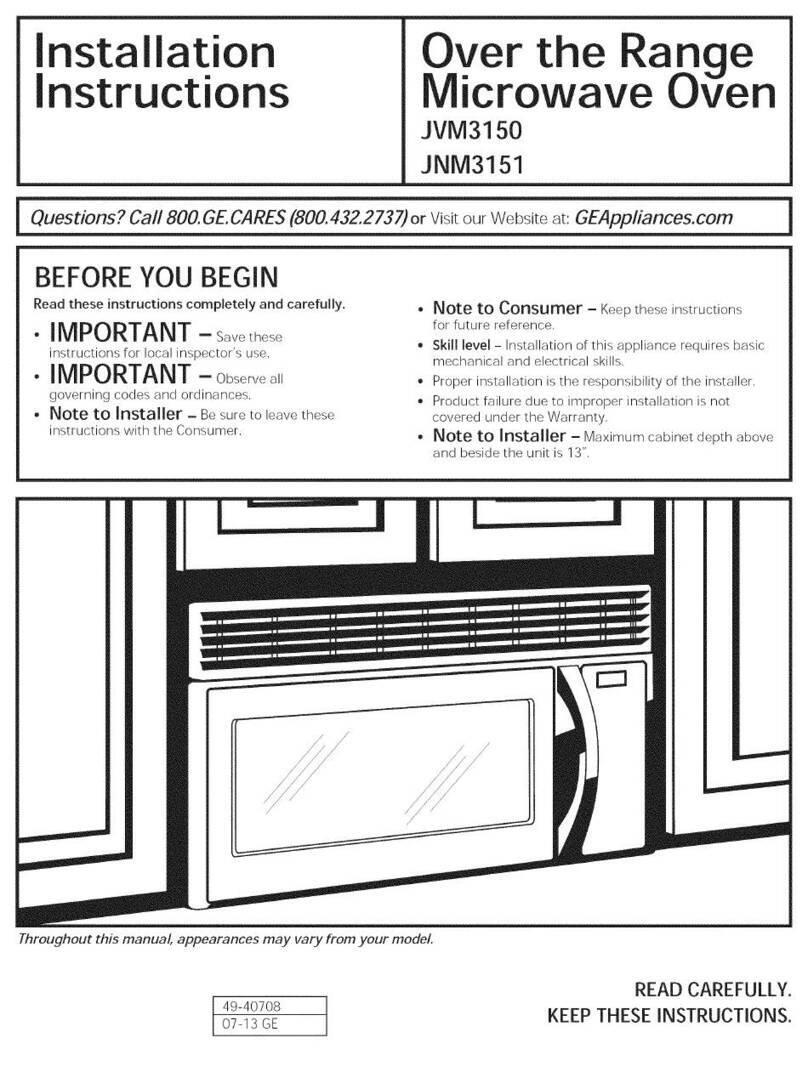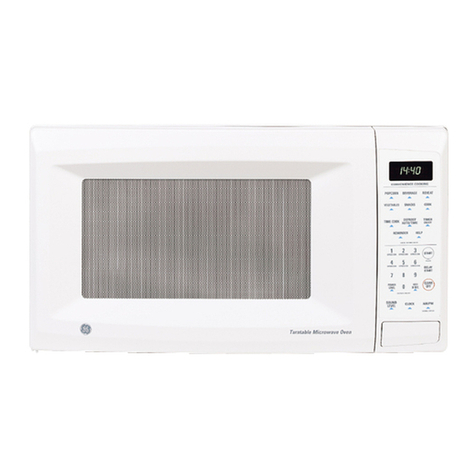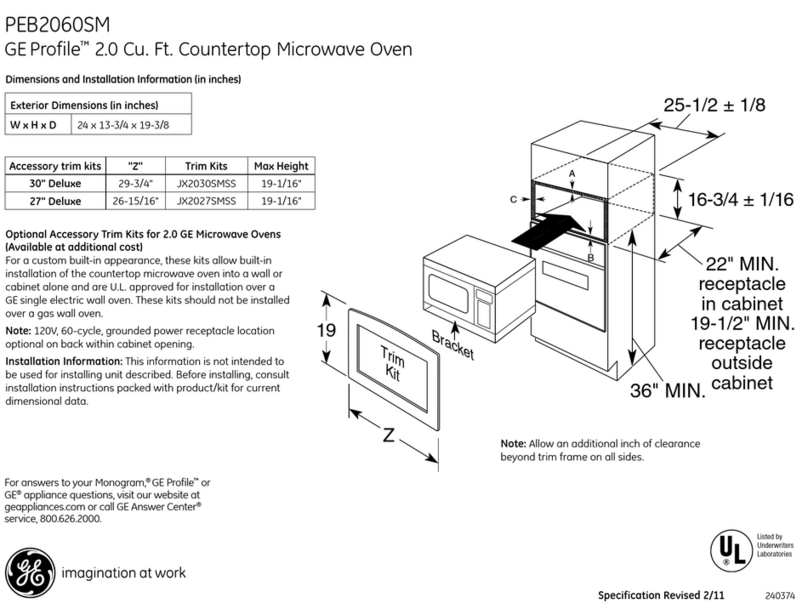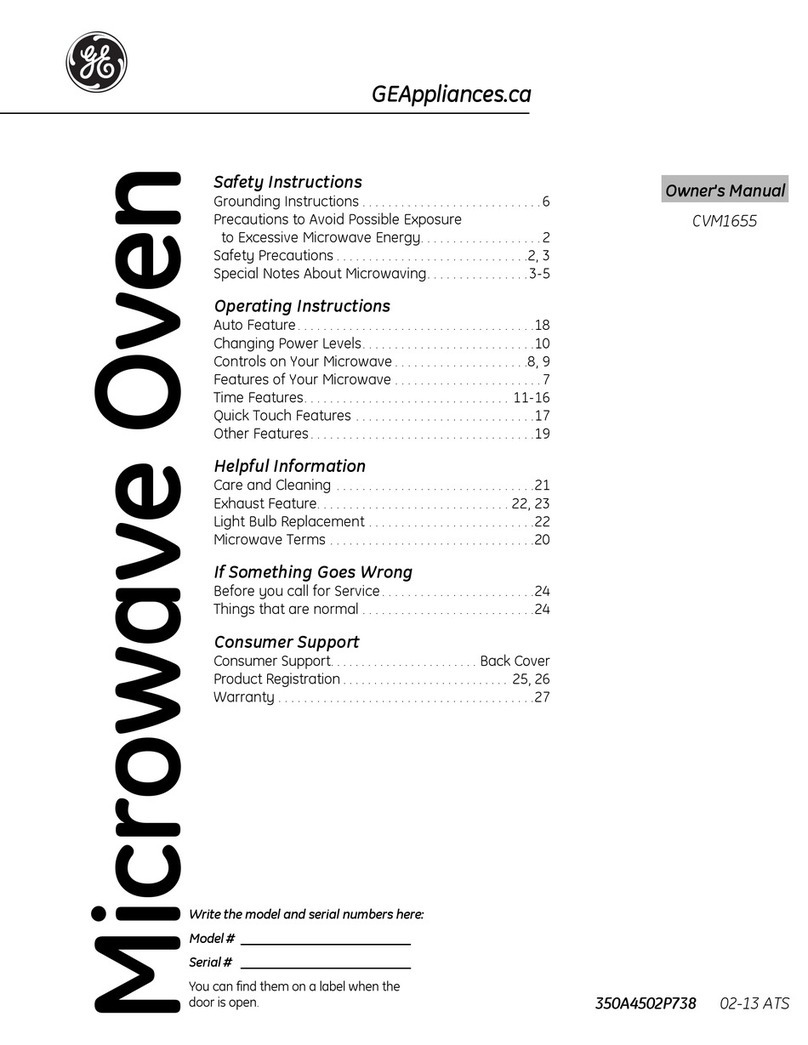~ORTANT
SAFETY
mSTRUCTIONS
Read
M
instmctions
before using
ttis
appliance.
K
When using electrical appliances, basic safety
precautions should be followed, including the
foUowing:
A
WARNING-Toreducetheriskof
bums, electric shock, fire, injury to persons
or exposure to excessive microwave energy:
. Read and follow
the specific “Precautions to
Avoid Possible Exposure to Excessive Microwave
Energy” on the previous page.
●
This appliance must be grounded. Connect
only to properly grounded outlet. See Grounding
Instructions section in the back of this book.
●
Use this appliance only for its intended use as
described in this manual. Do not use corrosive
chemicals or vapors in this appliance. This
microwave oven is specifically designed to heat
or cook food, and is not intended for laboratory
or industrial use.
●
For best operation, plug this appliance into its
own electrical outlet, to prevent flickering of
lighti,
blowing of fuse or tripping of circuit
breaker.
●
Install or locate this appliance only in
accordance with the provided Installation
Instructions.
●
Be certain to place the front surface of the door
three inches or more back from the countertop
edge to avoid accidental tipping of the
appliance in normal usage.
●
Do not cover or block any openings on the
appliance.
●
Do not store this appliance outdoors. Do not use
this product near water—for example, in a wet
basement, near a swimming pool or near a sink.
●
This microwave oven is not approved or tested
for marine use.
c
Do not immerse power cord or plug in water.
●
Keep power cord away from heated surfaces.
●
Do not let power cord hang over edge of table
or counter.
●
Do not operate this appliance if it has a
damaged power cord or plug, if it is not
working properly, or if it has been damaged
or dropped.
●
Do not operate oven without the turntable and
turntable support seated and in place.
●
Do not allow turntable to be restricted so the
turntable cannot rotate.
●
See door surface cleaning instructions in the Care
and Cleaning section(s) of your book.
●
This appliance should be serviced only by
qualified service personnel. Contact nearest
authorized service facility for examination, repair
or adjustment.
●
As with any appliance, close supervision is
necessary when used by children.
●
To reduce the risk of fire in the oven cavity:
—Do not overcook food. Carefully attend
appliance if paper, plastic or other combustible
materials are placed inside the oven to facilitate
cooking.
—Remove wire twist-ties from paper or plastic
bags before placing bags in oven.
—Do not use your microwave oven to dry
newspapers.
—Do not use recycled paper
produck.
Recycled
paper towels, napkins and waxed paper can
contain metal flecks which may cause arcing
or ignite. Paper products containing nylon or
nylon filaments should be avoided, as they may
also ignite.
—Do not pop popcorn in your microwave oven
unless in a special microwave popcorn accessory
or unless you use popcorn labeled for use in
microwave ovens.
—Do not overcook potatoes. They could dehydrate
and catch fire, causing damage to your oven.
—Do not operate the oven while empty to avoid
damage to the oven and the danger of fire. If
by accident the oven should run empty a minute
or two, no harm is done. However, try to avoid
operating the oven empty at all times—it saves
energy and prolongs the life of the oven.
(continued next page)
3
